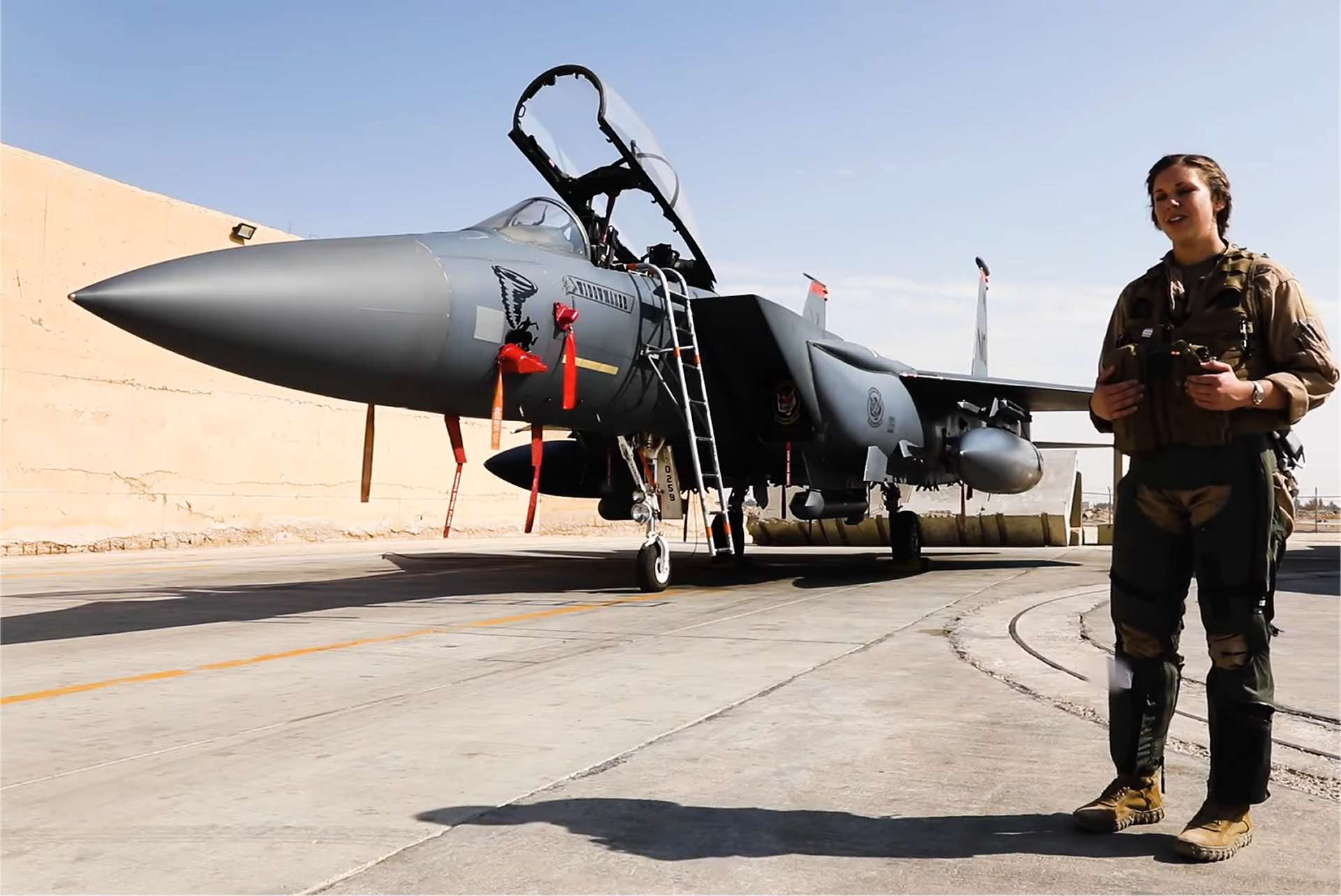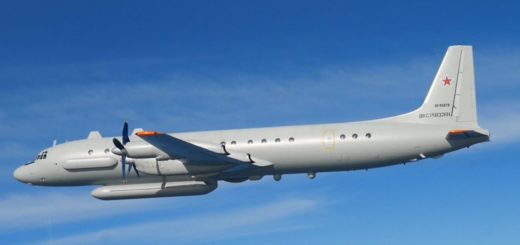US Air Force Recognizes Female Airman’s Role in Defending Israel

{loadposition bannertop}
{loadposition sidebarpub}
According to information published by ABC News on November 15, 2024, Capt. Lacie “Sonic” Hester of the 494th Fighter Squadron was awarded the Silver Star on November 12, 2024, for her heroic role in the shootdown of more than 80 Iranian drones during a large-scale missile and drone attack on Israel in April. The ceremony, held at Royal Air Force Lakenheath in the United Kingdom, was presided over by U.S. Air Force Gen. James Hecker, commander of U.S. Air Forces in Europe – Air Forces Africa.Follow Army Recognition on Google News at this link
Capt. Lacie Hester, recognized for her heroic actions during a historic combat mission, stands as a trailblazer in the U.S. Air Force’s defense against Iranian drone threats. (Picture source: US Air Force)
The Silver Star, the nation’s third-highest military decoration for valor, was awarded to a female airman for the first time in history, marking a significant milestone in the ongoing evolution of women’s roles in the U.S. armed forces. Capt. Hester, an F-15E instructor weapons systems officer, becomes the 10th female service member ever to receive this prestigious honor.
The operation unfolded on the night of April 13, 2024, when Iran launched over 300 ballistic missiles and drones at Israel, retaliating for an Israeli missile strike in Damascus that killed a senior Iranian commander. U.S. military assets, including aircraft and naval ships, worked alongside Israeli forces to intercept 99% of the incoming threats.
The U.S. Air Force’s response included 14 sorties flown by F-15E Strike Eagles from the 494th Fighter Squadron, deployed from an undisclosed base in the Middle East. Capt. Hester and her pilot, Maj. Benjamin “Irish” Coffey, played pivotal roles as airborne mission commanders, coordinating fighter movements while actively engaging the drones. After expending all air-to-air missiles, the duo used their fighter’s Gatling gun to neutralize additional drones, demonstrating exceptional skill and determination under pressure.
On April 13, 2024, the long-simmering tensions between Iran and Israel erupted into a significant confrontation, marking a dramatic escalation in their conflict. The events of the day were set in motion by an Israeli airstrike on April 1, which targeted an Iranian consulate in Damascus, Syria. This strike killed several senior Iranian officials, including two high-ranking generals of the Islamic Revolutionary Guard Corps (IRGC), and served as the immediate catalyst for Iran’s unprecedented direct response.
In retaliation, Iran launched “Operation True Promise,” a coordinated assault involving over 300 drones and missiles. The targets included key sites across Israel, such as airbases in the Negev desert, the Golan Heights, and the Arad region. The attack unfolded on the evening of April 13, with approximately 170 drones, 30 cruise missiles, and 120 ballistic missiles fired at Israeli territory. This represented one of the most extensive direct strikes by Iran against Israel in recent memory.
Israel’s advanced defense systems, including the Iron Dome, proved critical in thwarting the attack. With assistance from international allies like the United States, United Kingdom, and France, Israel intercepted nearly 99% of the incoming projectiles. Despite the scale of the assault, casualties and damage were limited. A seven-year-old Bedouin girl was seriously injured by debris, and thirty-one individuals were treated for minor injuries or stress-related conditions. Minor damage was reported at the Nevatim Airbase, but overall, Israeli infrastructure and military operations remained largely intact.
In the days following the attack, Israel conducted limited retaliatory strikes targeting Iranian military assets. These actions were carefully calibrated to send a message of deterrence while avoiding a full-scale war. Analysts suggested that both Iran and Israel were testing each other’s thresholds, attempting to assert strength without triggering an uncontrollable spiral into war.
The events of April 13 highlighted a shift in the Iran-Israel dynamic, transitioning from indirect, proxy-based hostilities to direct military confrontation.

{loadposition bannertop}
{loadposition sidebarpub}
According to information published by ABC News on November 15, 2024, Capt. Lacie “Sonic” Hester of the 494th Fighter Squadron was awarded the Silver Star on November 12, 2024, for her heroic role in the shootdown of more than 80 Iranian drones during a large-scale missile and drone attack on Israel in April. The ceremony, held at Royal Air Force Lakenheath in the United Kingdom, was presided over by U.S. Air Force Gen. James Hecker, commander of U.S. Air Forces in Europe – Air Forces Africa.
Follow Army Recognition on Google News at this link
Capt. Lacie Hester, recognized for her heroic actions during a historic combat mission, stands as a trailblazer in the U.S. Air Force’s defense against Iranian drone threats. (Picture source: US Air Force)
The Silver Star, the nation’s third-highest military decoration for valor, was awarded to a female airman for the first time in history, marking a significant milestone in the ongoing evolution of women’s roles in the U.S. armed forces. Capt. Hester, an F-15E instructor weapons systems officer, becomes the 10th female service member ever to receive this prestigious honor.
The operation unfolded on the night of April 13, 2024, when Iran launched over 300 ballistic missiles and drones at Israel, retaliating for an Israeli missile strike in Damascus that killed a senior Iranian commander. U.S. military assets, including aircraft and naval ships, worked alongside Israeli forces to intercept 99% of the incoming threats.
The U.S. Air Force’s response included 14 sorties flown by F-15E Strike Eagles from the 494th Fighter Squadron, deployed from an undisclosed base in the Middle East. Capt. Hester and her pilot, Maj. Benjamin “Irish” Coffey, played pivotal roles as airborne mission commanders, coordinating fighter movements while actively engaging the drones. After expending all air-to-air missiles, the duo used their fighter’s Gatling gun to neutralize additional drones, demonstrating exceptional skill and determination under pressure.
On April 13, 2024, the long-simmering tensions between Iran and Israel erupted into a significant confrontation, marking a dramatic escalation in their conflict. The events of the day were set in motion by an Israeli airstrike on April 1, which targeted an Iranian consulate in Damascus, Syria. This strike killed several senior Iranian officials, including two high-ranking generals of the Islamic Revolutionary Guard Corps (IRGC), and served as the immediate catalyst for Iran’s unprecedented direct response.
In retaliation, Iran launched “Operation True Promise,” a coordinated assault involving over 300 drones and missiles. The targets included key sites across Israel, such as airbases in the Negev desert, the Golan Heights, and the Arad region. The attack unfolded on the evening of April 13, with approximately 170 drones, 30 cruise missiles, and 120 ballistic missiles fired at Israeli territory. This represented one of the most extensive direct strikes by Iran against Israel in recent memory.
Israel’s advanced defense systems, including the Iron Dome, proved critical in thwarting the attack. With assistance from international allies like the United States, United Kingdom, and France, Israel intercepted nearly 99% of the incoming projectiles. Despite the scale of the assault, casualties and damage were limited. A seven-year-old Bedouin girl was seriously injured by debris, and thirty-one individuals were treated for minor injuries or stress-related conditions. Minor damage was reported at the Nevatim Airbase, but overall, Israeli infrastructure and military operations remained largely intact.
In the days following the attack, Israel conducted limited retaliatory strikes targeting Iranian military assets. These actions were carefully calibrated to send a message of deterrence while avoiding a full-scale war. Analysts suggested that both Iran and Israel were testing each other’s thresholds, attempting to assert strength without triggering an uncontrollable spiral into war.
The events of April 13 highlighted a shift in the Iran-Israel dynamic, transitioning from indirect, proxy-based hostilities to direct military confrontation.







